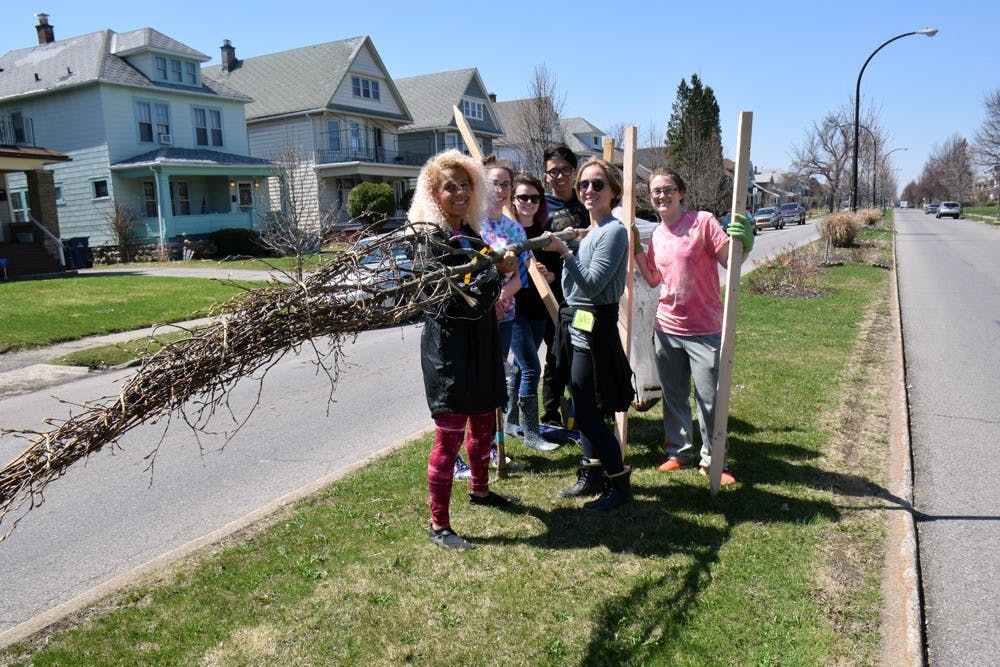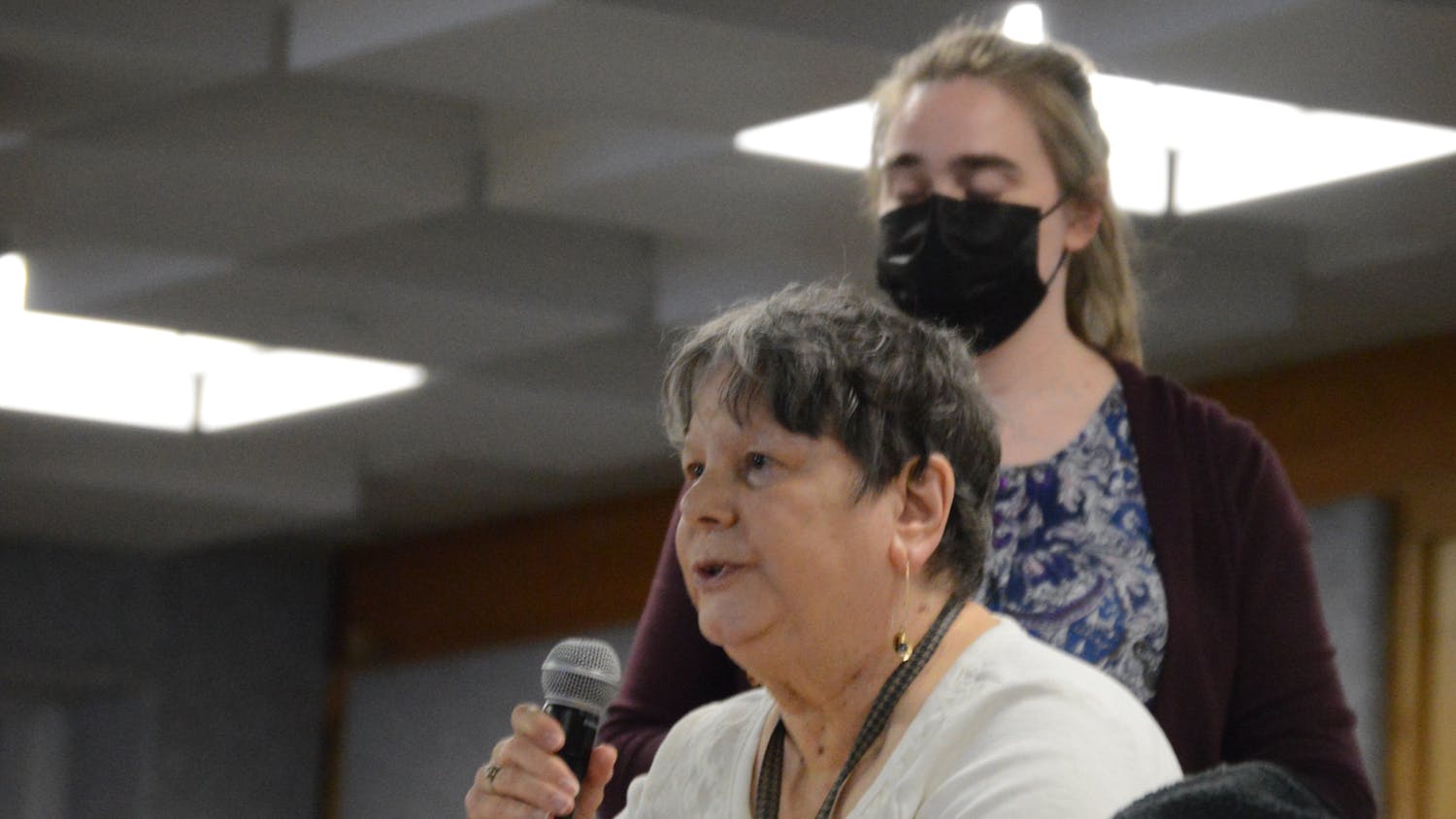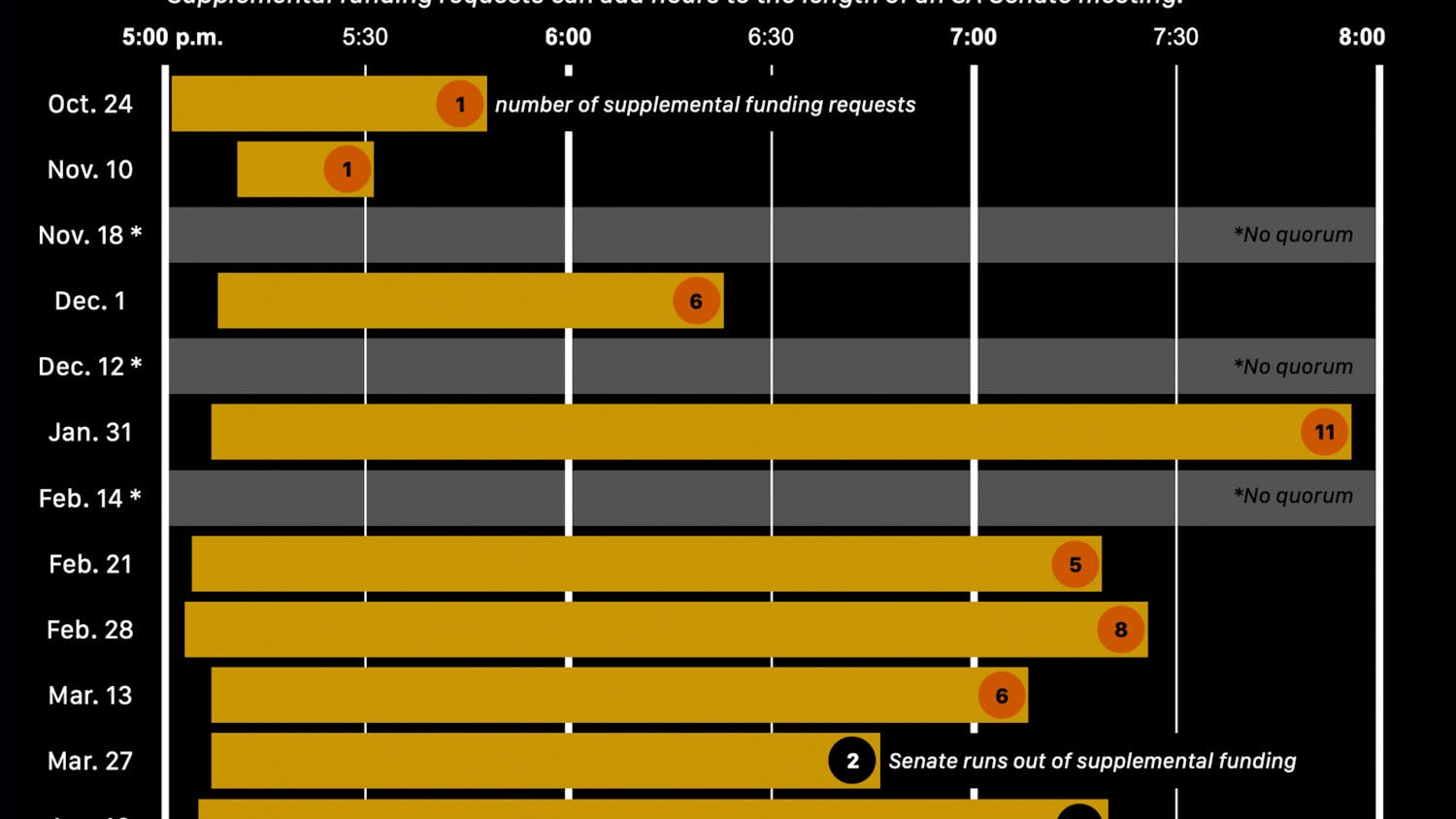On Saturday, large crowds of students moseyed around the streets of University Heights.
But they weren’t looking for the nearest party.
Approximately 360 students sauntered the neighborhoods around South Campus with shovels, sledgehammers and rakes in hand to plant 200-250 trees in a the ReTree The District project.
ReTree the District is a collaborative effort started by the University Heights Collaborative, the University Heights Tool Library, the Bailey Avenue Business Association and the University District Block Club Coalition to plant 1,000 trees in the Heights over the next two years. UB is also partially funding the initiative.
“We really as community partners sat down and said, ‘What are some of the really big issues in the neighborhood?’ and one of them was this uneven distribution of trees,” said Darren Cotton, a volunteer at the University Heights Tool Library and vice president of the University Heights Collaborative.
Cotton said while some streets in the Heights are “really beautifully tree-lined,” others are barren with no trees at all. Organizers wrote out a business proposal of what it would take to plant 1,000 trees in the Heights and who the potential partners would be.
He said planting trees leads to increased property values and a decrease in cooling and heating costs. Cotton also said he’s read that streets with trees have reduced crime and fewer incidences of mental health issues – a theory called “Broken Windows Theory.”
The University Heights neighborhood has experienced rates of crime double that of Amherst – the town where North Campus is located. There were 523 major crimes, including rapes, robberies, assaults, burglaries, larceny and vehicle theft, in the Heights in 2012, according to Buffalo Police crime statistics.
Jeanie-Marie Austin, a senior Spanish major, grew up in a town in the Finger Lakes region that she described as “environment-focused” and filled with trees.
“We had a community garden, so when I got the email about planting trees I was really excited to come out here and I’d really like to help them to plant these trees and help them see that someone cares about their community,” Austin said.
The UB Academies have also played a big role in making the project possible, according to Cotton. ReTree the District has been working with a group of students this semester as part of an independent study. Some of them came out for their last planting in November and expressed their desire to be more involved, so they worked as team leaders on Saturday.
Elizabeth Mercer, a freshman psychology major who worked as a team leader, said she chose to participate in the event to build leadership experience.
“It’s a great opportunity that I think builds the community and lets students interact with the community around them in University Heights and I’m really glad to see all these people that came out here today and I’m really excited to work with them and meet new students,” Mercer said.
Madelaine Britt, a junior political science major, participated in ReTree last semester and “wanted to have a leadership role” this semester.
“I think it’s a great organization and it’s a good thing to do for the community. I think being a team leader, you can maybe try to get people excited about ReTree and get people motivated,” Britt said.
Britt said trees could have a “very wonderful impact” on communities. She said trees could help people come together and create an atmosphere where people feel they are living in a “caring and inviting community.”
“As much student involvement as we could have, we should have and I think it’s very important to get students out there and form a relationship with the community beyond partying or littering,” Britt said.
Britt said ReTree the District planted around 185 trees last year.
Xiaohan Cheng, a senior finance major, said ReTree the District allows students to have an impact on the community for the few years they live there.
“I think it’s a good opportunity for us to join some school activities. It’s very meaningful for us to leave a mark here because we won’t be living here in the future,” Cheng said.
For $10 a year, the Tool Library provides residents access to about 900 tools for their University Heights homes, but the tools usually end up not being put to use, according to Cotton. He said ReTree the District gives them an opportunity to be put to use.
Cotton said an important aspect of the ReTree the District initiative is to allow people to see a different side of the Heights. He said the area gets a “bum rap” from the media, but that there are many things “going for it.”
“I think just large volunteer events like this is just a great way to showcase that this is a neighborhood where people care and where there is a really strong community and where we’re working towards creating a better community,” Cotton said.
Editor’s note: Madelaine Britt was an editor for The Spectrum in Spring 2014.
Ashley Inkumsah is an assistant news editor and can be contacted at ashley.inkumsah@ubspectrum.com





